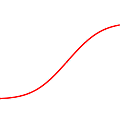Machine Production Records Descriptive Statistics and Test of Hypothesis Helen managed a major manufacturing
Machine Production Records
Descriptive Statistics and Test of Hypothesis
Helen managed a major manufacturing facility that was devoted largely to producing millions of identical small metallic parts. While the parts produced were (intended to be) identical, the facility produced them by using hundreds of presses, of three different types (which we'll call types 1, 2, and 3). The rated production rates for machine types 1, 2, and 3 were 700, 200, and 155 parts per minute, respectively, but actual production rates varied. Helen felt that factors such as quality of input material, worn or "changed-out" dies, and dirty or poorly maintained presses would probably affect production. Helen suspected that there could significant differences between the Rated Production Rates for each machine and the actual production rates. This could either be explained by differences in the supervisory effectiveness of the different managers or because there are significant differences in the downtown time for each of the three different machines
The facility had always kept daily production records, but from what Helen could tell, no one ever consulted them or did anything with them other than to put them in file cabinets at the end of each reporting period. She thought that in principle she should be able to monitor production rates for the types of machines, identify any machines that seemed to be in need of adjustment, and characterize the amount of downtime to be expected. Accordingly, she extracted one day's production records for 116 presses at her facility.
The machines were scheduled for a shift of 7.75 hours each day. The operators recorded the hours of operation manually on clipboards kept near each machine. The actual quantities of parts produced were determined from automatic counters on the machines. The data on MACHINE_PROD.SAV are derived from these logs.
Assignment:
- Can you identify and list all the issues that Helen needs to address?
- Having Identified all the problems please advise Helen by explaining the problems and proposing solutions
- Be sure to present tables and charts summarizing your findings
Data Definitions: (1) OBS = Machine ID Number (2) M TYP E = Type of Machine (3) PROD = Total Output of Machine during Hours of Operation (4) HRS WRK = Total Hours of Operation when Data was Taken (5) HRS D N = Total Down-Time during the Day
Deliverable: Word Document



![[Solution] Page 382, # 1 : Examine the relationship between education [Solution] Page 382, # 1 : Examine](/images/solutions/MC-solution-library-81017.jpg)

![[See Steps] Assignment 12 Instructions: Use the RENAL.sav file [See Steps] Assignment 12 Instructions: Use the](/images/solutions/MC-solution-library-81019.jpg)
![[Solution] Do the two tests (Stroop and FDT) differ taking into [Solution] Do the two tests (Stroop and](/images/solutions/MC-solution-library-81020.jpg)
